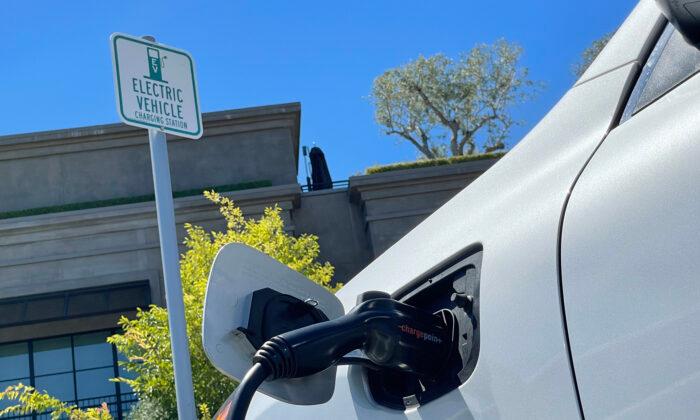The cost of President Joe Biden’s green energy agenda could rise to $1.2 trillion, more than triple the original projection, if not accompanied by conservative implementation guidelines, financial analysts say.
The Inflation Reduction Act (IRA) of 2022 offers large tax and investment credits for the purchase of electric vehicles, home solar panels, heat pumps, energy-efficient home appliances, and other so-called clean energy initiatives.
However, a report this month from multinational investment bank Goldman Sachs estimates that the true cost could be closer to $1.2 trillion.

EV Tax Credits
Electric vehicle tax credits account for more than 50 percent of the cost of Biden’s green energy policies, according to Marc Goldwein, senior vice president and senior policy director at the Committee for a Responsible Federal Budget.The IRA provides a “self-sufficiency” credit for EV buyers of $3,750 or $7,500 credit based on the mineral and battery components of the vehicle.
The CBO appears to have estimated that relatively few vehicles would qualify for the credit, according to Goldwein, while Goldman Sachs takes a more optimistic view.
“They seem to think that 70 percent of new cars will be electric by 2030, which is far above other estimates,” he told The Epoch Times.
“The Biden administration’s aspirational target is 50 percent. And estimates I’ve seen from other groups range from 25 to 40 percent.”
Also, the Goldman Sachs projections are based on 2022 through 2032, a year longer than the time period studied by the CBO. Using the identical time frame would lower the Goldman Sachs projection to about $930 billion, Goldwein said.
However, the regulations for implementing the law will affect those estimates.
“The energy provisions in the Inflation Reduction Act very well may end up costing significantly more than originally scored, in part because the regulations around it seem to be shaping up to be more lax than what the law intended,” he said.

Both the CBO projection and the Goldman Sachs report are predictions, which are based on assumptions, not market data. The true cost of the incentives will be determined by consumer behavior.
That makes regulatory guidelines a critical factor in rolling out the new law, according to Goldwein. Looser guidelines, which would allow more vehicles to qualify for the credit, could wind up costing taxpayers significantly more.
Consumer and Corporate Winners
The Biden administration predicts that consumers will reap huge benefits from the IRA, including $14,000 in consumer rebates for energy-efficient heating and other home appliances and a 30 percent tax credit on home solar panels, which would save some $9,000 over the life of the installation.Goldman Sachs estimates that the IRA will also create a sizable windfall for corporations as they react to changes in regulation and consumer behavior.
The administration also projects the production of 950 million solar panels, 120,000 wind turbines, and 2,300 grid-scale battery plants by 2032.
Oil, gas, and other industries will reallocate up to $3 trillion in capital to develop fuel sources that are currently profitable only with tax credits provided by the IRA, according to sources familiar with the Goldman Sachs report.

Safeguards on Cost
CBO estimates serve as a guideline for legislators when considering the financial impact of a proposed law, although the estimates are never entirely accurate forecasts of the future.“But if it’s going to be significantly more expensive than the estimate, we ought to put some tax safeguards in place to keep those costs under control,” Goldwein said.
That could mean placing a cap on either the number of qualifying vehicles or the total amount paid in tax credits.
“I do think it would behoove us to put some protections in place so that it doesn’t end up costing, say, $800 billion,” he said.
Goldman Sachs declined to provide a copy of its findings to The Epoch Times.
The White House didn’t provide a comment on the Goldman Sachs projections.





